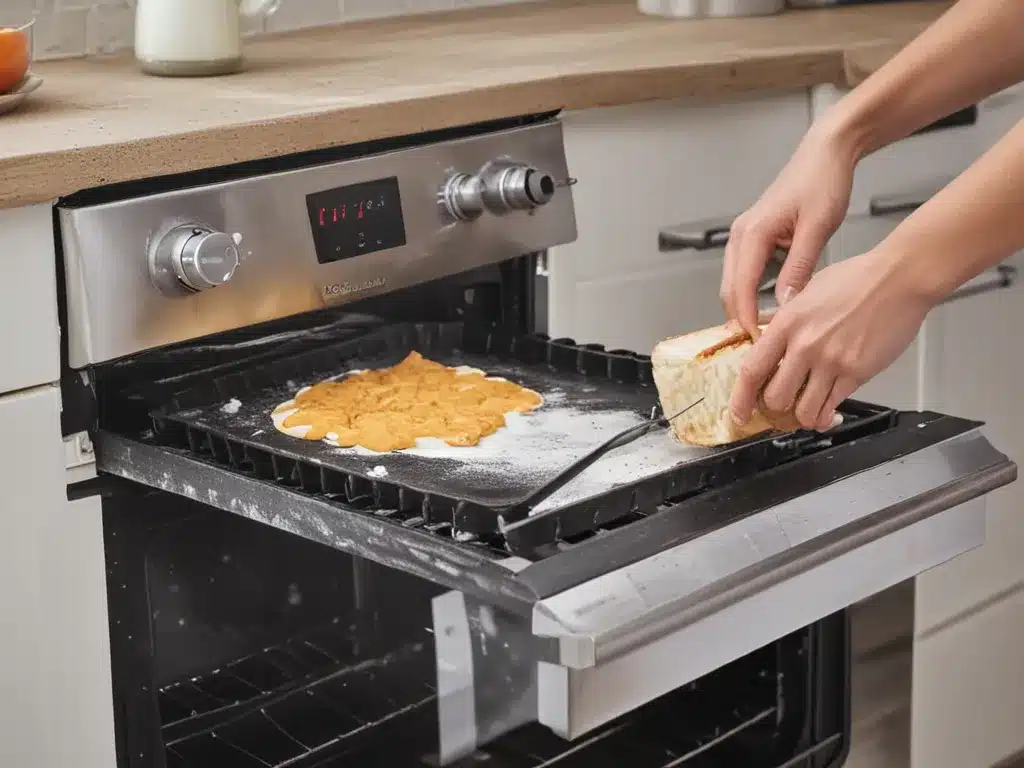Introduction
Grease and oil stains can be extremely difficult to remove completely. However, there are scientifically proven methods that can remove all traces of grease from surfaces. In this article, I will explore the chemistry behind grease cleaning and outline the most effective techniques to banish grease stains for good.
The Chemistry of Grease and Oil
Grease and oil consist of long chains of hydrocarbons. This makes them hydrophobic – meaning they repel water. When grease comes into contact with a surface, it binds to the material on a molecular level. The long hydrocarbon chains are sticky and cling stubbornly to materials. This makes grease stains very challenging to fully eliminate.
Surfactants are the key to dissolving grease and lifting it from surfaces. Surfactants are compounds that contain both hydrophilic and hydrophobic regions. The hydrophilic region bonds with water while the hydrophobic region bonds with grease. This allows the grease to be suspended in water and rinsed away.
Dish Soap – An Effective Grease Cutter
Dish soap is formulated to be an excellent grease cutter. The surfactants in dish soap target food grease, breaking up the long chains of fat and oil. Dish soap lifts and surrounds grease molecules, allowing them to be washed away with water.
To remove grease stains, apply a small amount of dish soap directly onto the stain. Gently rub the dish soap in using a soft brush or sponge. Let it soak for 10-15 minutes then rinse thoroughly with hot water. Repeat as needed until the grease is fully eliminated. The combination of surfactants and water work together to penetrate, encapsulate and rinse away greasy residues.
Baking Soda – A Gentle Grease Absorber
Baking soda is a mild abrasive that also effectively absorbs grease and oil. Sprinkle baking soda generously over greasy areas and let it sit for several hours or overnight. The baking soda will begin to draw out and soak up the greasy stain.
Next, scrape away the baking soda – the grease will come away with it. For stubborn stains, create a paste by mixing baking soda with just a small amount of water. Spread the paste onto the greasy spot and let it work for 30 minutes before wiping it off. The gentle yet potent absorbing power of baking soda pulls grease out.
Lemon Juice – A Natural Degreasing Acid
Citric acid is a natural grease-fighting substance found in lemon juice. It has mild acidic properties that cut through thick, oily residues. Lemon juice also contains trace amounts of surfactants that help lift grease.
Dip a sponge into undiluted lemon juice and rub it over grease-stained materials. Let it soak in for 5-10 minutes. The citric acid and surfactants in the lemon juice will penetrate and dissolve the grease bind. Rinse thoroughly – the grease will wash away cleanly. For extra cleaning power, combine lemon juice with baking soda.
Borax – An Industrial Strength Grease Remover
Borax (sodium borate) is an extreme grease cleaner used by professional cleaners. It is an alkaline mineral salt that dissolves grease and oil. Borax also acts as a bleach and stain remover.
For grease stains, make a paste with borax and hot water. Apply the paste and let it set for 1 hour. The borax paste will penetrate, emulsify and draw out deeply set oil. After 1 hour, wipe away the borax paste. Rinse thoroughly – all traces of grease and stains will be gone. Borax should be used with caution as it is a powerful chemical cleaner.
The Best Way to Remove All Traces of Grease
For superior grease cleaning power, a combination of dish soap, baking soda and lemon juice is most effective. First, apply dish soap to penetrate and detach the grease bind. Next, sprinkle on baking soda to absorb and lift away the grease. Lastly, scrub with lemon juice to dissolve any remaining oil residue.
This 3-step method uses surfactants, absorption and acids to thoroughly eliminate grease stains. For heavy industrial grease, borax may be required. With the right science-backed techniques, you can definitively remove all traces of grease.







